This is why our article today will focus on aerial photography. Good photography is about showing people views of the world they would not otherwise see. From new cultures to war zones, to distant landscapes and rare wildlife, photography is a constant struggle to show the world in new, compelling ways. Very often this novelty arrives in the form of a different physical perspective on the landscape. Aerial photography, particularly in the age of drone photography and video, is one increasingly common, and effective way to create new angles on familiar places. My work in Alaska frequently carries me into the skies in small single-engine bush planes and occasionally helicopters. These too are great ways to make aerial photography. Unlike drones, they also offer the freedom to use your favourite camera and lenses while you create images from the air. The two methods of aerial photography I’ll discuss here, airplanes and drone photography require very different techniques. They are completely different photographic experiences, involving different ways to approach and think about aerial photography. Here are a few tips to consider.
Airplanes and Helicopters for Aerial Photography
To start off, I’m not talking about passenger jets. These jumbo airplanes may be great for getting us from one place to another but they are lousy photography platforms. Sure, you see occasional images out the scratched window of a big jet, but they mostly look the same. Usually, such photos involve a wing and some interesting clouds or a sunset. And they quickly lose their novelty. Small planes, however, particularly single-engine slow-flying machines, are an entirely different story. They can be an exceptional perch for your camera.
Attaining Sharpness
The interior of a small plane is a vibration-filled, shot-blurring nightmare. But, with the right technique, you can minimize or eliminate unwanted blur. Here are a few tips:
Lenses
At 100 miles an hour in a low-flying airplane, the landscape passes quickly. If you don’t act fast when you see a good subject, you’ll miss the shot. Zooms are extremely useful when shooting from the air because they offer the freedom to quickly recompose at a variety of focal lengths without the trouble of changing lenses. While I’ve made aerial photos with everything from a 17mm to a 200mm, I find the ideal range is around 24-105, and lenses with that focal range are just about right.
Talk with Your Pilot
Usually in a small plane, you’ll be in direct communication with your pilot. They might be willing to help you out with your photography. If you are flying strictly for the purpose of making photos and have chartered the airplane, then by all means ask the pilot to help you out by circling, tipping a wing up or down, or even opening windows or removing doors. A good charter pilot will do what he can to help as long as what you are asking for is safe and legal. Frequently in my work, however, I’m simply using the airplane as transportation to get into Alaska’s vast backcountry. Even when going from one place to another, however, a pilot is often willing to fly lower or higher, tip a wing, or adjust course a bit to help. Just keep in mind that their business is getting you to your destination safely, so don’t be pushy if they say no.
Composition
Finding the right composition in an aerial photo is almost as challenging, perhaps more so, than shooting from the ground. Any discussion of photographic composition in aerial photography runs a very real risk of leading us into a photographic rabbit hole. However, I encourage you to think differently when shooting from the air. Drone, airplane, helicopter, or whatever, use your aerial perspective to create images that show your place in the sky. Things look different from above, forests and trees change shape, valleys loom large and the details of mountain tops emerge in ways the don’t from the ground. Embrace that and be creative. Forget the normal rules of composition and create something different.
Drone Photography
Flying a remote drone is a very different experience from being up in the air yourself, camera in hand. There are some advantages, but also a number of drawbacks.
Drawbacks to Drones
Most consumer drones limit you to one focal length and lack the ability to zoom or change lenses. While “professional” level drones may offer these capabilities, the price tag of such aircraft are often out of the range for most photographers. Second, drones have limited flight ranges, elevation capabilities, and are, at times, limited by regulations. Some locations, like National Parks in the United States (and many other countries) are off-limits to drones. Limits to the range of drones means you still have to get close to your subject (relatively speaking) in order to get the image you need. Lastly, countries across the world are creating laws limiting the use of drones. In some countries, it’s almost impossible to get permission to fly legally. In the United States, if you want to use your drone for any commercial purpose, including selling images created with your drone, you need to be a licensed unmanned aerial vehicle pilot.
Advantages of Drones
Even with those drawbacks, drones still have a lot things going for them. First and foremost is freedom and flexibility. See some pretty evening light out your window and feel like making some aerial photos? No problem, just grab the drone and go. Cost is another. A charter aircraft can cost hundreds of dollars an hour. Two hours of flying time in a charter helicopter will just about pay for a decent quadcopter drone. You also get the freedom to adjust composition at a whim. Feel like making a shot from five feet off the ground and then your next from 100? You can make the change in seconds. You also have the time to get things right. In a fast-moving airplane, the compositions can come and go in seconds. With a drone, you can simply adjust the position of the drone or angle of the camera for as long as you wish until you get it right. As long as your battery holds out anyway.
Camera Settings
I like to think of entry-level to mid-range drones as flying camera phones: they can make lovely images, but are limited in flexibility. Most drones have the ability to adjust color temperature and exposure using an exposure compensation-like setting. But they offer little manual control otherwise. Shutter speed and aperture are left mostly up to the camera. One thing most decent drones do offer, is the ability to shoot in RAW. If your drone offers that setting, I strongly recommend you use it. The quality coming from the small sensors of most consumer drones is marginal and RAW will allow you to make the most of each photo. It can be processed just as you would any RAW image from your SLR or mirrorless camera.
Drone Photography Composition
I like to fly my drone fairly low. I find the combination of altitude and wide-angle lenses make everything look less dramatic and smaller if I’m flying too high. Twenty to thirty metres off the ground is probably my favourite height, but of course, it varies on where I’m flying and the image I’m creating. Remember to take advantage of the many camera angles drone photography allows. Shooting straight down is almost impossible from a plane. From a drone though? It is as easy as angling your camera. Playing with lines and patterns is a drone speciality. Take advantage of the way the world looks from above and play with dividing your images into parts using the natural variations in the landscape. Trees from above, for example, create a starburst pattern, not a typical way humans see a forest! The flexibility provided by drone photography is extraordinary. Don’t be afraid to experiment with aerial images of places a plane could never fly.
Warnings About Drones
Always follow the rules! Flying a drone around airports, emergency situations, wildfires, or areas with other aircraft is not only irresponsible but also dangerous and even life-threatening. Be aware of the laws where you are flying and follow them. Punishments for violations can be harsh. Last, be respectful of others. Don’t fly over private property if you don’t have permission from the land-owner and be aware of how your flight is impacting the experience of others. Simply, don’t be a jerk.
Conclusion
Aerial photography is a gateway to new ways of seeing. Whether you are shooting from the passenger seat of a Cessna or from your phone screen using a drone, there are abundant opportunities to make new and exciting aerial images. Explore it and share with me what you make! We also have a great pre-flight checklist and a list of the best drones for kids for more great drone photography tips for beginners.
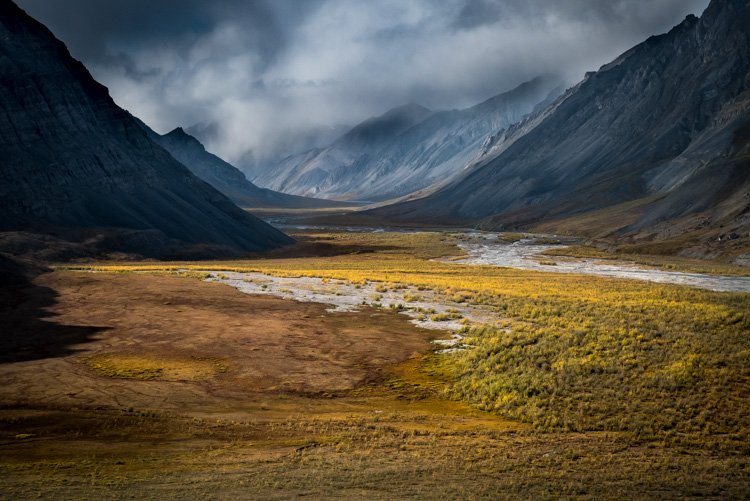



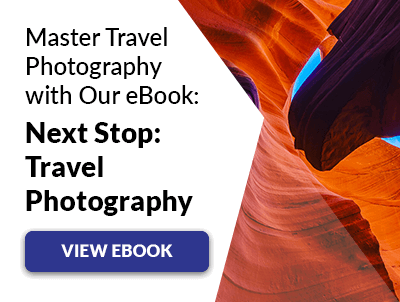
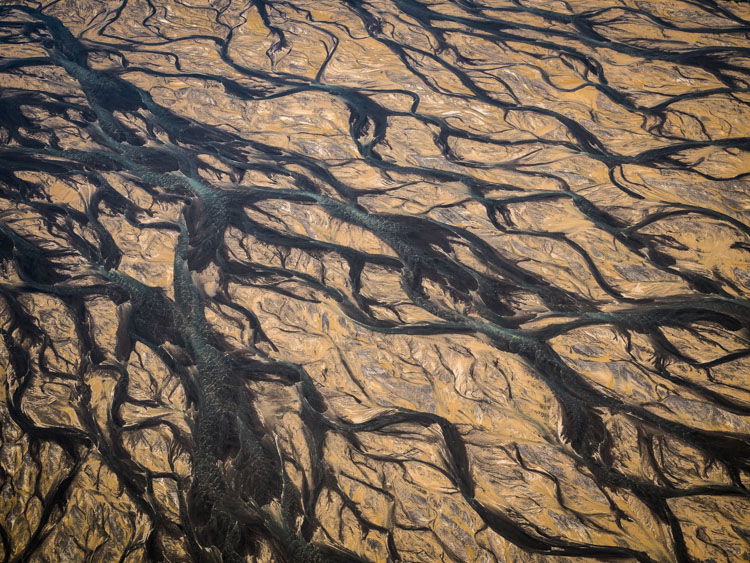
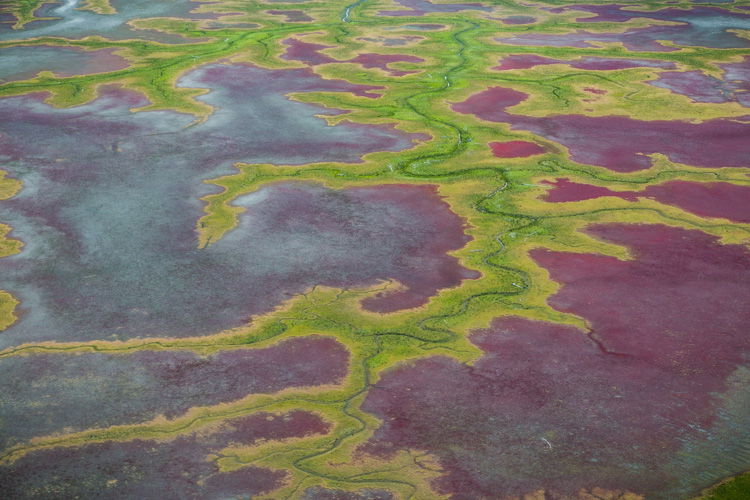
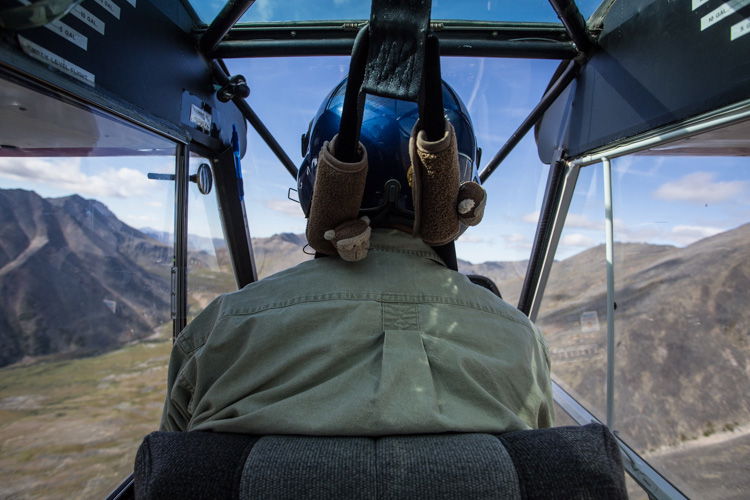
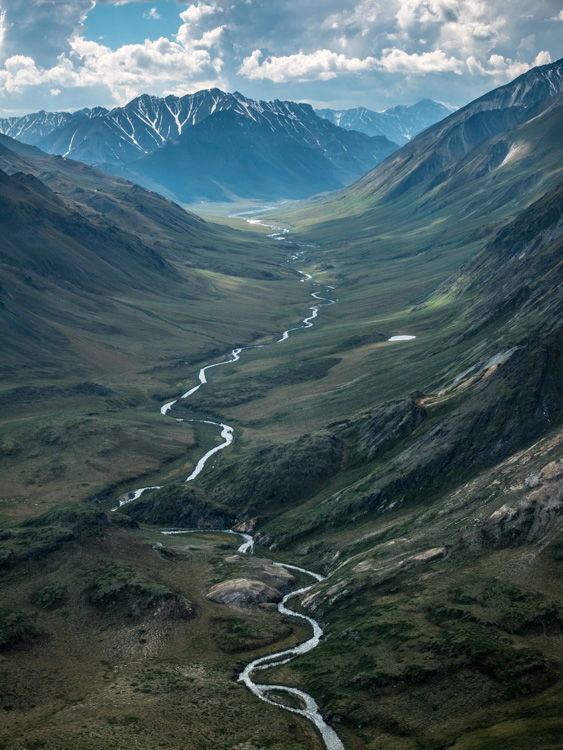
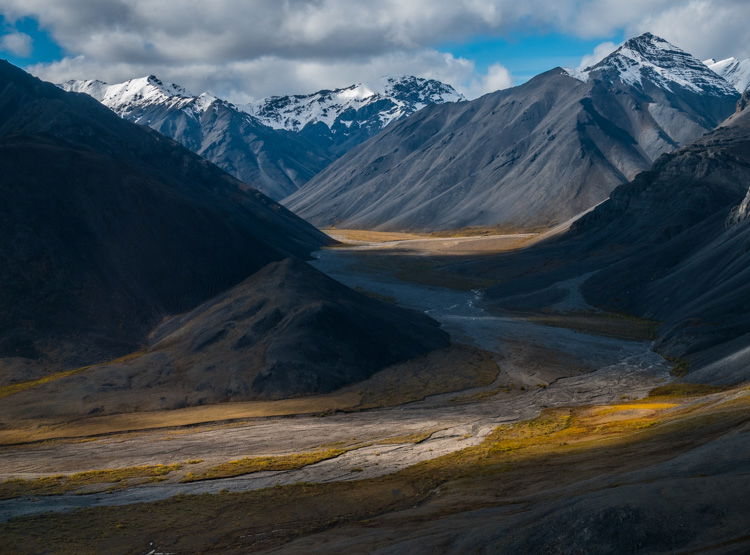
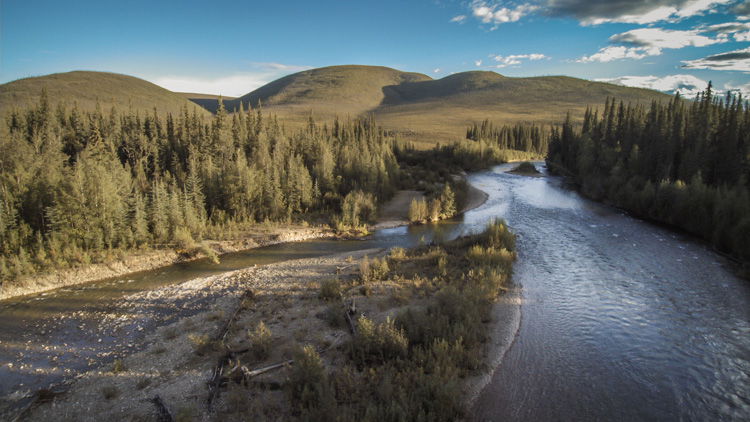
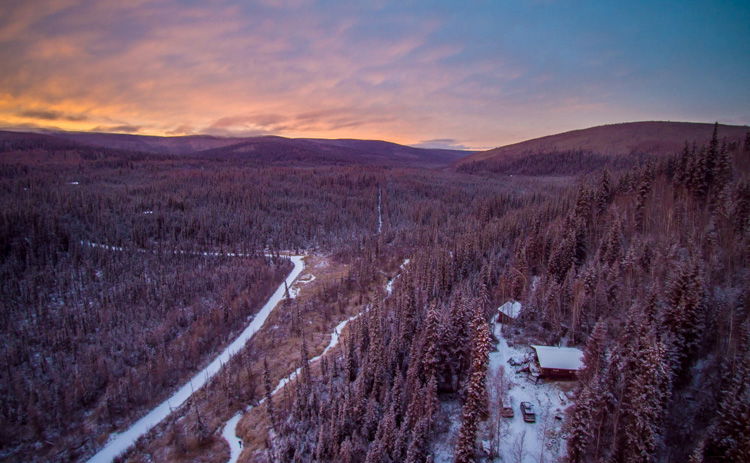

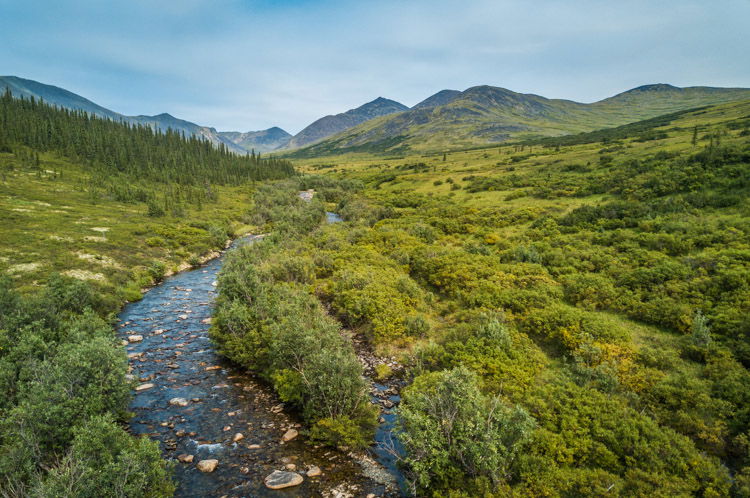

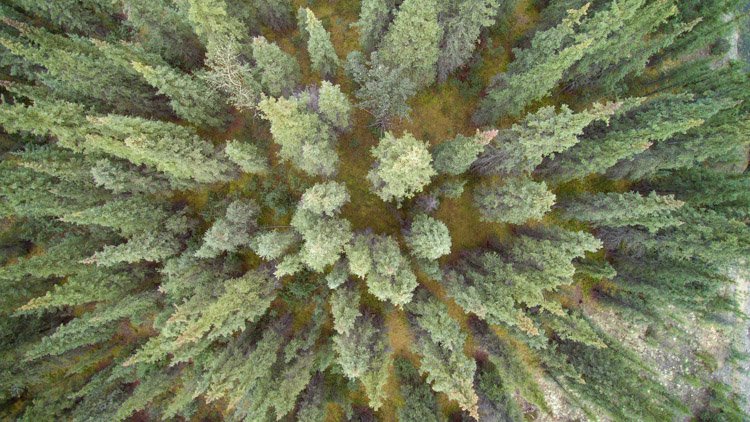

title: “Aerial Photography Basics And Drone Photography Tips” ShowToc: true date: “2023-02-06” author: “Joshua Scarborough”
This is why our article today will focus on aerial photography. Good photography is about showing people views of the world they would not otherwise see. From new cultures to war zones, to distant landscapes and rare wildlife, photography is a constant struggle to show the world in new, compelling ways. Very often this novelty arrives in the form of a different physical perspective on the landscape. Aerial photography, particularly in the age of drone photography and video, is one increasingly common, and effective way to create new angles on familiar places. My work in Alaska frequently carries me into the skies in small single-engine bush planes and occasionally helicopters. These too are great ways to make aerial photography. Unlike drones, they also offer the freedom to use your favourite camera and lenses while you create images from the air. The two methods of aerial photography I’ll discuss here, airplanes and drone photography require very different techniques. They are completely different photographic experiences, involving different ways to approach and think about aerial photography. Here are a few tips to consider.
Airplanes and Helicopters for Aerial Photography
To start off, I’m not talking about passenger jets. These jumbo airplanes may be great for getting us from one place to another but they are lousy photography platforms. Sure, you see occasional images out the scratched window of a big jet, but they mostly look the same. Usually, such photos involve a wing and some interesting clouds or a sunset. And they quickly lose their novelty. Small planes, however, particularly single-engine slow-flying machines, are an entirely different story. They can be an exceptional perch for your camera.
Attaining Sharpness
The interior of a small plane is a vibration-filled, shot-blurring nightmare. But, with the right technique, you can minimize or eliminate unwanted blur. Here are a few tips:
Lenses
At 100 miles an hour in a low-flying airplane, the landscape passes quickly. If you don’t act fast when you see a good subject, you’ll miss the shot. Zooms are extremely useful when shooting from the air because they offer the freedom to quickly recompose at a variety of focal lengths without the trouble of changing lenses. While I’ve made aerial photos with everything from a 17mm to a 200mm, I find the ideal range is around 24-105, and lenses with that focal range are just about right.
Talk with Your Pilot
Usually in a small plane, you’ll be in direct communication with your pilot. They might be willing to help you out with your photography. If you are flying strictly for the purpose of making photos and have chartered the airplane, then by all means ask the pilot to help you out by circling, tipping a wing up or down, or even opening windows or removing doors. A good charter pilot will do what he can to help as long as what you are asking for is safe and legal. Frequently in my work, however, I’m simply using the airplane as transportation to get into Alaska’s vast backcountry. Even when going from one place to another, however, a pilot is often willing to fly lower or higher, tip a wing, or adjust course a bit to help. Just keep in mind that their business is getting you to your destination safely, so don’t be pushy if they say no.
Composition
Finding the right composition in an aerial photo is almost as challenging, perhaps more so, than shooting from the ground. Any discussion of photographic composition in aerial photography runs a very real risk of leading us into a photographic rabbit hole. However, I encourage you to think differently when shooting from the air. Drone, airplane, helicopter, or whatever, use your aerial perspective to create images that show your place in the sky. Things look different from above, forests and trees change shape, valleys loom large and the details of mountain tops emerge in ways the don’t from the ground. Embrace that and be creative. Forget the normal rules of composition and create something different.
Drone Photography
Flying a remote drone is a very different experience from being up in the air yourself, camera in hand. There are some advantages, but also a number of drawbacks.
Drawbacks to Drones
Most consumer drones limit you to one focal length and lack the ability to zoom or change lenses. While “professional” level drones may offer these capabilities, the price tag of such aircraft are often out of the range for most photographers. Second, drones have limited flight ranges, elevation capabilities, and are, at times, limited by regulations. Some locations, like National Parks in the United States (and many other countries) are off-limits to drones. Limits to the range of drones means you still have to get close to your subject (relatively speaking) in order to get the image you need. Lastly, countries across the world are creating laws limiting the use of drones. In some countries, it’s almost impossible to get permission to fly legally. In the United States, if you want to use your drone for any commercial purpose, including selling images created with your drone, you need to be a licensed unmanned aerial vehicle pilot.
Advantages of Drones
Even with those drawbacks, drones still have a lot things going for them. First and foremost is freedom and flexibility. See some pretty evening light out your window and feel like making some aerial photos? No problem, just grab the drone and go. Cost is another. A charter aircraft can cost hundreds of dollars an hour. Two hours of flying time in a charter helicopter will just about pay for a decent quadcopter drone. You also get the freedom to adjust composition at a whim. Feel like making a shot from five feet off the ground and then your next from 100? You can make the change in seconds. You also have the time to get things right. In a fast-moving airplane, the compositions can come and go in seconds. With a drone, you can simply adjust the position of the drone or angle of the camera for as long as you wish until you get it right. As long as your battery holds out anyway.
Camera Settings
I like to think of entry-level to mid-range drones as flying camera phones: they can make lovely images, but are limited in flexibility. Most drones have the ability to adjust color temperature and exposure using an exposure compensation-like setting. But they offer little manual control otherwise. Shutter speed and aperture are left mostly up to the camera. One thing most decent drones do offer, is the ability to shoot in RAW. If your drone offers that setting, I strongly recommend you use it. The quality coming from the small sensors of most consumer drones is marginal and RAW will allow you to make the most of each photo. It can be processed just as you would any RAW image from your SLR or mirrorless camera.
Drone Photography Composition
I like to fly my drone fairly low. I find the combination of altitude and wide-angle lenses make everything look less dramatic and smaller if I’m flying too high. Twenty to thirty metres off the ground is probably my favourite height, but of course, it varies on where I’m flying and the image I’m creating. Remember to take advantage of the many camera angles drone photography allows. Shooting straight down is almost impossible from a plane. From a drone though? It is as easy as angling your camera. Playing with lines and patterns is a drone speciality. Take advantage of the way the world looks from above and play with dividing your images into parts using the natural variations in the landscape. Trees from above, for example, create a starburst pattern, not a typical way humans see a forest! The flexibility provided by drone photography is extraordinary. Don’t be afraid to experiment with aerial images of places a plane could never fly.
Warnings About Drones
Always follow the rules! Flying a drone around airports, emergency situations, wildfires, or areas with other aircraft is not only irresponsible but also dangerous and even life-threatening. Be aware of the laws where you are flying and follow them. Punishments for violations can be harsh. Last, be respectful of others. Don’t fly over private property if you don’t have permission from the land-owner and be aware of how your flight is impacting the experience of others. Simply, don’t be a jerk.
Conclusion
Aerial photography is a gateway to new ways of seeing. Whether you are shooting from the passenger seat of a Cessna or from your phone screen using a drone, there are abundant opportunities to make new and exciting aerial images. Explore it and share with me what you make! We also have a great pre-flight checklist and a list of the best drones for kids for more great drone photography tips for beginners.
















